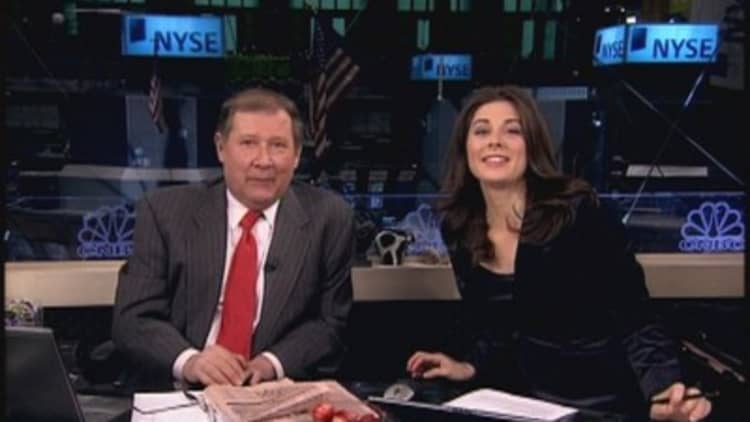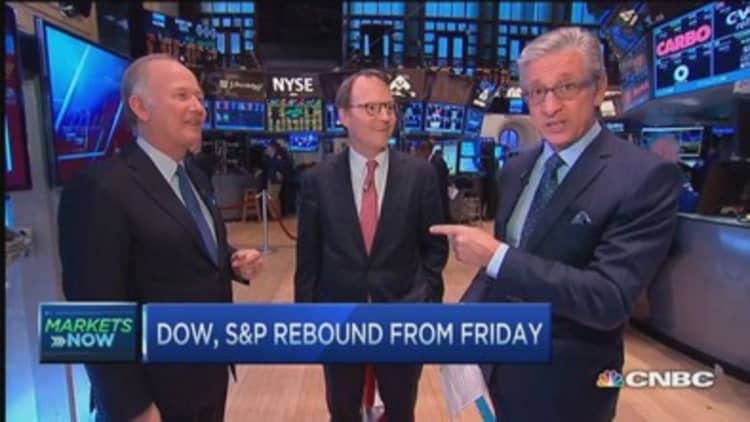
"I'm going to step out on a limb here....I think we're at a bottom. I really do."
—Mark Haines, March 10, 2009
The Haines Bottom. It's passed into legend now, and with the benefit of hindsight, plenty have claimed that there were obvious signs of bottoms forming at the time.
But not many were calling a bottom.
Oh sure, some noted that commodities were showing signs of a bottom. Others noted there was insider buying of big stocks, including General Electric (CNBC's parent at the time), Wells Fargo, and Bank of America.
In my Trader Talk note on March 10 of that year, I noted, "The markets are showing some signs of seller exhaustion."
But all that talk is a long way from calling a bottom.
It's hard to remember how dark and painful it was in those days. Many of us present (myself included) have tried to put it out of our memories.
Here's what it was like: we had dropped for three straight weeks and could not sustain a rally. Any move off the lows was met with selling. Retail investors continued to be huge sellers: TrimTabs estimated there was $30 billion in mutual fund withdrawals for the week ending Wed., March 4.
I noted at the time the problem for stocks was simple: you cannot have a stock price without an earnings target, and no one knew what the earnings target—or multiple—should be.
And so we kept dropping.
The intraday low for the S&P 500 came on Fri., March 6, and the number was widely noted: 666. Yikes! This, from its historic high of 1,576 on Oct. 11, 2007, a drop of roughly 57 percent.
In my Trader Talk blog that day, I noted, "Traders believe a rally is coming, but few are positioned to take advantage of it."
The problem was simple: we had already had a rally, and everyone got burned. From Nov. 20, 2008, to the close on Dec. 31, the S&P went from roughly 750 to 900...a 20 percent rally.
And it all faded away.

The S&P was down 7 percent the week ending March 6, the worst week since November 2008.
Mon., March 9 did not start out especially promising either. A major, $41 billion merger between Merck and Schering Plough that day was greeted with a yawn.
Yet, that Monday was the closing low for the markets: 676.53, but it wasn't obvious that this was a bottom.
That's why Mark's call on the following day was particularly gutsy.
"The key to me is the 200-day moving average of the Dow," Mark told his co-anchor, Erin Burnett. "We are now at 67 percent of the 200-day moving average. Now, it's gotten lower than that...but 67 percent of the 200-day moving average is a real nice place to get a bounce. So I think we're going to have a rally."
In his own folksy way, Mark had made a profound observation about the broad market: that even in times of great crisis, there is an eventual "reversion to the mean." By that I mean that when the S&P moves dramatically above or below key averages (he mentioned the 200 day moving average, but he could have also used the 50-day moving average), far outside normal historic values, the market usually turns around.
You could express this mathematically, using fancy terms like "standard deviation," but Mark wasn't that kind of guy. He simply noted that it was weird—really weird—that the S&P was so far away from its 200-day moving average.
And he was right. The market staged a broad rally that day: regional banks up 16 percent, home builders up 12 percent, REITs up 14 percent, oil service up 6 percent, semiconductors up 8 percent.
Volume was heavy.
"There we go. A man unafraid to make a call," Erin said to him.
The next day, March 11, the market was up again, its first two-day rally in almost a month.
And the bottom was in.
Thanks for the call, Mark.
(Haines passed away in May of 2011.)


